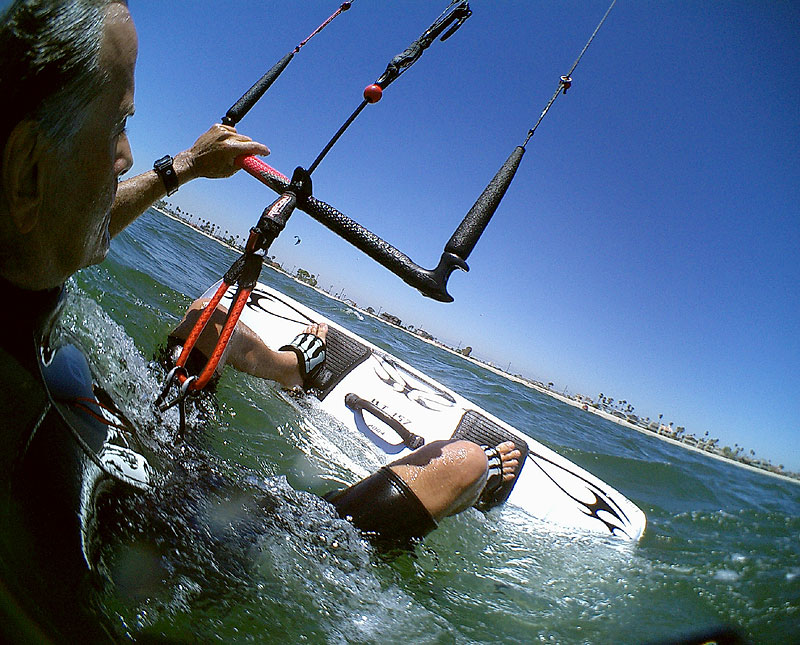
Kicking off a new series, using video feedback taken from our camps and lessons to show you some of the common errors made in the quest for kitesurfing supremacy!
If you found this useful please click some of the buttons below to spread the stoke!

Kicking off a new series, using video feedback taken from our camps and lessons to show you some of the common errors made in the quest for kitesurfing supremacy!
If you found this useful please click some of the buttons below to spread the stoke!
Our teaching philosophy here at Tantrum Kitesurf consists of 3 separate elements:
It is our goal that you are fully confident to take yourself out safely at the end of your stay. Note this does not necessarily mean you will be a kite surfing superstar, more that you have the skills, confidence and most importantly be as safe as you need to be to manage your own progression after this point. Due to skill fade and the fickleness of the wind this is best achieved by Total Immersion, living and breathing kitesurfing during your time with us. You will find that confidence fades quicker than skill however. And so we would urge you as soon as you feel able to take yourself out kitesurfing when you return home.
Deep Practice requires you to purposefully operate at the edge of your ability forcing yourself to screw up, working on your technique, seeking constant critical feedback, and focusing ruthlessly on shoring up weakness.
It is upon this principle more than any other that our entire training is based.
Every single human movement, thought or feeling is a precisely timed electronic signal travelling through a chain of neurones – a circuit of nerve fibres.
Myelin is the insulation that wraps these nerve fibres and increases signal strength, speed and accuracy.
The more we fore a particular circuit, the more myelin optimises that circuit and the stronger, faster and more fluent our actions and thoughts become.
This then leads us to a new understanding of human talent…Talent isn’t born it is grown.
While certain people may have obvious physical advantages i.e. be taller or stronger there is really no such thing as born talent.
The way we induce the myelin to sheath these nerve circuits is through Deep Practice.
A great example of Deep Practice is given by Spartak Tennis Club. This club in the last few years has produced more top 20 women players than the entire United States. And for the first 6 months the girls do not even hit a ball! Instead they ruthlessly work on perfecting their stroke by dry practicing in the minutest of detail, micro correcting hand and arm position to the nearest millimetre. Believing that the ball actually screws things up until the girls have perfected their technique in this manner.
See the whole movement as one big chunk. Watch the movement over and over and simply absorb it, then practice the movements even if with no equipment.
Break the action down into its smallest definable parts, memorise these pieces and string them back together again.
Play with time, slow the action down then speed it up to discover its architecture. Perform it at glacial pace to uncover its sub components.
You’ll also see when we teach the waterstart we use this exact formula to really ingrain the skill. This is also where wake boarding is really useful as we can break this skill down in a controlled environment.
Learn to feel your own errors and hunger to correct them struggle on the edge of your ability.
“Give a man a fish and you feed him for a day, give a man a net and you feed him and his family for life.”
When you were at school or if you sent your kids to school would you expect the teacher to deliberately give you the wrong answer to a question they had just posed?
In the West we wouldn’t, yet in Japan this is exactly what happens on a regular basis. The reasoning behind this apparent madness is that during the struggle for the correct answer the students expand their own knowledge and ability to work through problems for themselves and thus learn better, deeper and with more flexibility than they would if they were just given the correct answer.
We believe in this Japanese style of teaching whereby the student actually becomes their own teacher and takes responsibility for their own learning because we have found that this style of teaching produces vastly superior results in a much shorter space of time with less skill fade than any other method. So when we’re stood on the beach watching you chase around after the board we’re not being cruel, (no matter how much we may be laughing!!) likewise this is why our instructors do not get into the water to hold you in position or put the board on your feet…it’s you’re lesson and we want you to learn to do these things as being able to ride is no use if you can’t get the board on in the first place.
We have noticed that when using this method a skill takes to slightly longer to grasp initially, but once mastered is much better ingrained, more flexible and less subject to skill fade.
Especially with the advent of the internet and get rich schemes we have been indoctrinated with the idea of overnight success and instant gratification. Unfortunately this is not how real life works. We believe fully in the the idea of effort and slow progress over natural ability and overnight success.
Those who commit to a skill long-term in their own mind are much more likely to practice and succeed. So ask yourself why are you here?
The brain will do almost anything to be consistent with its identity, this is one of the brains most powerful drivers. Our total immersion courses are designed to help you get into the identity of a kitesurfer. While you’re here nurture this idea and allow yourself to feel the vibe and be drawn into the lifestyle.
If you can change your identity to include the statement “I am a kite surfer” then you instantly associate and align your entire mind and body with that identity. As we’ve said the brain will do almost anything to ensure its identity is not betrayed. That alone is often enough to make the difference between someone who learns to kite surf and someone who merely doubles.
The internet sells the idea of a 3 day kitesurfing course and you’ll be up and riding and independent. This in the vast majority of cases simply isn’t true. While this is possible in perfect conditions 3 days simply does not allow the student to gain the depth of knowledge or ability to adapt to ever changing conditions that are so essential to be able to kitesurf safely.
While I’m sure you’ve all been sold on the idea of a three-hour course that will turn you into a kite surfing superstar unfortunately this simply isn’t the case. Yes there are places in the world where you can go on flat water lagoons with waist deep water where you can be up and riding in 3 days.
For example we get a lot of people who have learnt in places where the water is flat and who in those conditions can ride well, a lot of them struggle to body drag here…if that’s you it’s not a criticism. Tarifa is a tough place to learn and we make no bones about it, but you learn here and you can take those skills anywhere in the world. Simply put, you learn in Tarifa you learn once!
What we aim for is to teach people independence so that when you leave you can take your own kite down to your local beach and go out on your own.
Learning any new skill is frustrating but as humans have the knack of focussing on what we can’t do or what we’ve still to learn, rather than what they have already learnt. This is especially true during your time here where you can feel you have a mountain to climb and are walking backwards. Like Yoda…learn to control your focus, the good and the bad are always there…which will you choose to focus on?
Learning to kite surf can be very frustrating, as there is a huge amount to coordinate and we have no control over the elements. Your focus will govern your state of mind. Focus on the fact you’ve been here for 3 days and you’re still not riding and your mindset will drop, if you instead focus on all the things you have learned you will be able to keep a positive attitude going forward.
Your brain is simply a lump of meat until it is activated.
The most powerful way of activating it is to put yourself into a peak state.
The peak state is one where you feel any emotion intensely in our case a positive emotion.
This is where things get a little American…so forgive us , but it works!! The best way to put yourself in a peak state is to celebrate. Any way of celebrating your victories, even the small ones will keep you in that peak state. The best way to do this is by engaging your body so solo high-fives, pats on the back and the ultimate…the ass grind. Obviously we’re British (well some of us are) and just don’t do these sort of things…so if you’re uncomfortable with doing the grind in public view on the beach simply celebrate in your mind…even by pretending your grinding your brain will stay activated.
Our instructors will do everything they can to keep you in a peak state throughout the learning experience however the responsibility for this ultimately comes down to you and if you feel yourself in a place where you just can’t see the positive and don’t seem to be getting any better, it is probably best to take yourself off 10 min attempts to realign or run some pattern interrupts.
To break a pattern of negative thought the best way is to run a pattern interrupt. Simply jolt your mentality out of its current state and replace it with a new one. An easy way to do this is to change your physiology massively, jump up and down, run around, pull a stupid face, stick your finger up your nose and do a silly dance…anything that jolts you out of your current pattern of thought and shocks your brain into a different state where you can implant a new more useful state. This is a great tool during your training especially when you start to feel negative about your progress or just get frustrated in general.

I can’t breathe.
Darkness envelops me as every sinew in my body fights against the pull.
I still can’t breathe.
I don’t know where I am as the pressure develops. My heart beats faster; panic sets in.
My body spins like a rag doll in a washing machine, tumbling and tumbling. What’s this, dizziness now, through lack of oxygen, great…how long have I not been breathing, it feels like hours, days, weeks even.
I battle harder and harder before suddenly, I see light at the end of the tunnel.
An opening. A chance to breathe, to stay alive and I’m free…
Finally, I have my wetsuit on!

Which surprises your author, I’m a man who likes to think he can do most things, and without fear. I am a man who once tried to body surf Pipeline for instance for the ‘craic’ before getting rightfully, and with hindsight thankfully, chased out the sea by some annoyed surfers! But with kite surfing not only couldn’t I do it…it scared the b’jesus out of me!
It looked so simple.
Standing on the beach that first day, watching the riders in the waves effortlessly glide across the water before launching themselves into orbit with ease. A thing of beauty, a stark contrast to me in my wetsuit I hasten to add, think beached whale.
But as soon as I grabbed the kite for the first time the fear set in! Thoughts like,
‘What if I take off and end up in Mongolia? I don’t want to live in Mongolia! Especially with a smashed pelvis and neck accompanied by soiled underpants’
raced through my mind within seconds. Madness I know, Mongolia is a beautiful place for a start and the worse that could happen would be an accidental ‘jaunt’ down the beach! But I couldn’t get thoughts like these out of my head!
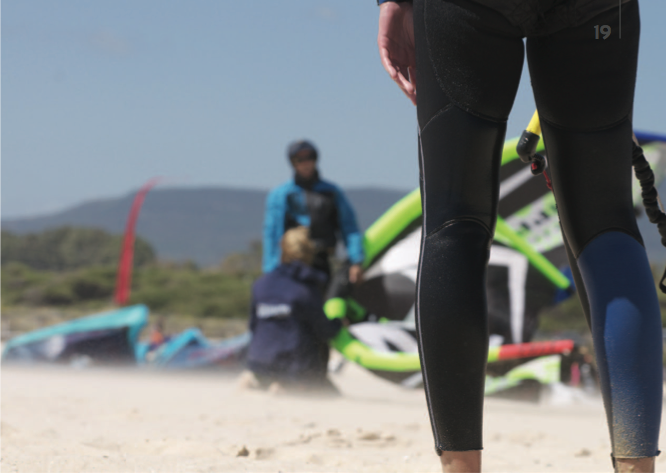
Not wanting to do anything with it ‘just in case!’ Just holding it on my own was enough. Then I’d glance around me and see young kids throwing them around without any apparent fear, kite looping and sliding along the beach, grinning from ear to ear, and my embarrassment would set in.
Man up!
I’d tell myself. But I couldn’t. What should have taken hours took what felt like weeks (that’s because it was), and we hadn’t even got to board starting yet, what would that entail? Pain, that’s what, but more about that later.
For some reason my brain seemingly would forget everything I was being taught and just when I’d think I was over the fear, it would come back, stronger. Every new day was like starting all over again. Much to the frustration of my instructors and myself too. After a lot of practice though I finally got the hang of it, and could fly the kite, without dropping it at least, now for the water!
Body dragging, in the scheme of my kite surfing career came relatively quickly to me, no problem; it was actually a lot of fun. I say quickly I of course mean slow, cities are built quicker compared to my ability to learn. But I got it, which was a breakthrough. If just a small one.
It was when I was given a board that my brain decided to stop. Getting on it or should I say in it, was fine, starting on the bl**dy thing was a very different matter.
Something inside me prevented me from carrying out the actions needed to get moving, and I couldn’t get over it no matter what or how hard I tried. Not enough power, too much power, bringing the kite down too low, not bringing it low enough, drifting it too far back not drifting it enough, you name it I did it.
My ‘Mongolian Fear’ as I like to call it came back in floods, even if I didn’t realise it, it was there and it crippled me.
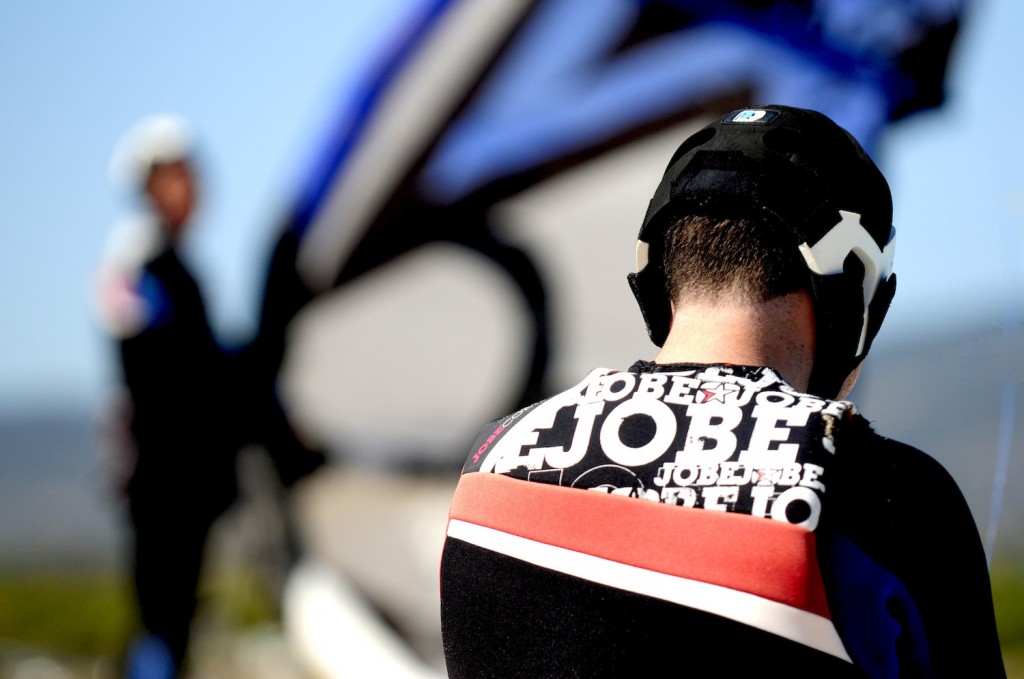
After numerous wetsuit tears, bumps, bruises, broken toes, and some mighty fine Superman impressions (Kites are my Kryptonite I’ve decided) which lasted for weeks and I mean weeks I still couldn’t get up and going.
Put this into context, a student at the school I was learning at was up and ‘riding’ by the end of their second day! Special is not the word for me. I’d like to point out that the student was a young fit teenager who was semi – pro at windsurfing and snowboarding, I’ve done neither and am a porky back pain riddled old man (30 is old in my eyes), he was always going to do better…well that’s my excuse anyway, and I’m sticking to it.
Mastering the ‘pop-up’, I use the term mastering loosely, finally came to me after what must have been the longest process in kite surfing lesson history, the ‘feeling’ came to me and my muscle memory kicked in and before I knew it I was coming up every time.
Whoop whoop!
Success at last. The trouble was I had no idea what to do next…
If you can relate to this come and join us in our Facebook group where we’ll get you up and riding in no time with expert advice, tips and tricks to get you up and riding 3 x Faster. Click the link to join…it’s FREE!
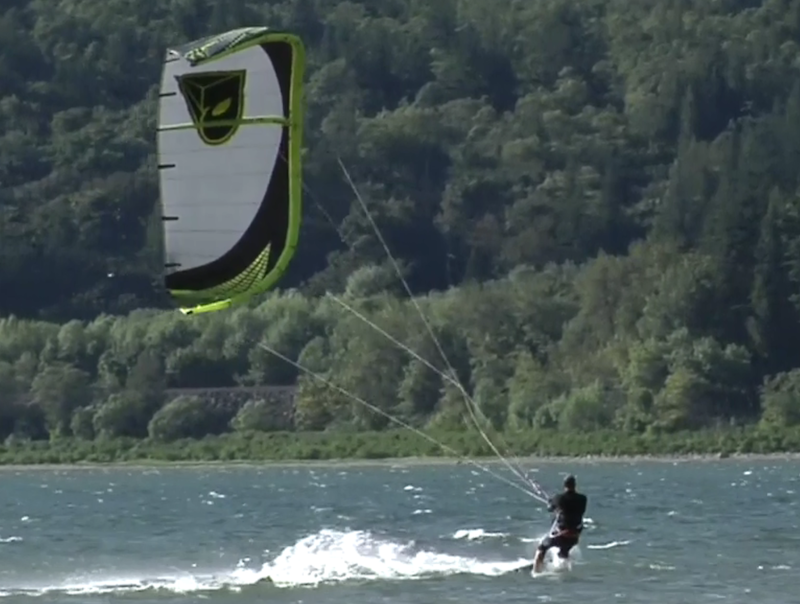
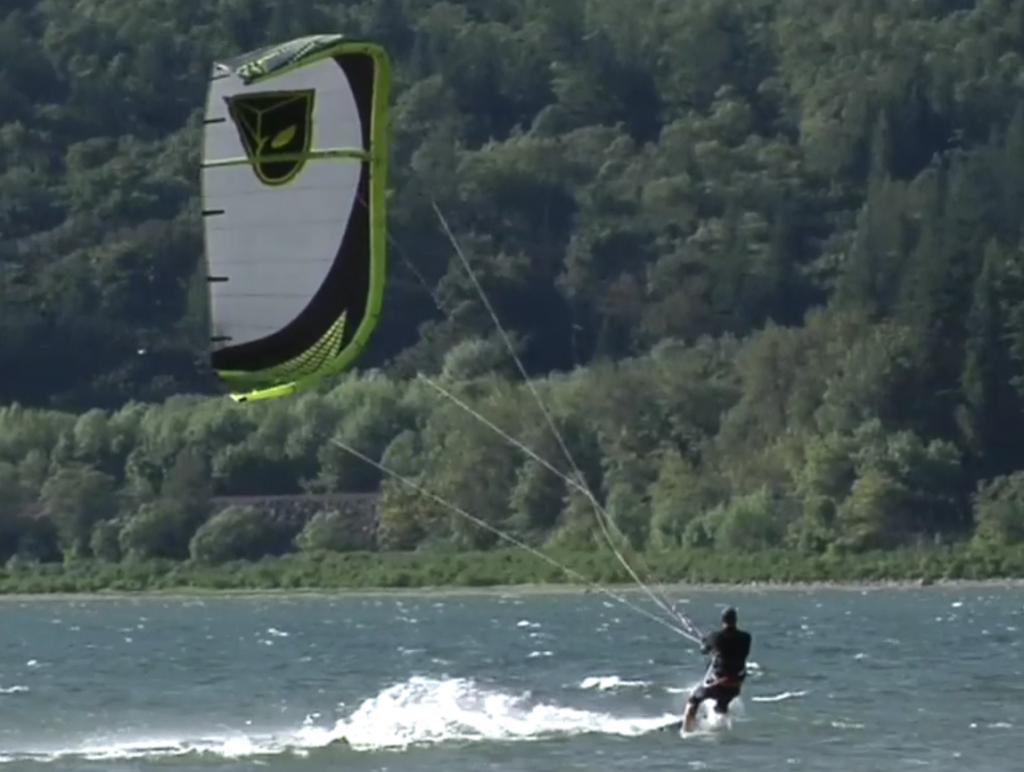
So we’ve been experimenting with using short lines here at Tantrum Kitesurf and I wanted to take a minute to tell you the results.
After coming back from her Instructor Training Course last year, Maria, one of our instructors started raving about using short lines, explaining how it made everything so much easier and safer. Always on the look out for ways to make things easier for clients (and indirectly ourselves!) I thought we’d better investigate.
We started by simply cutting some of the lines we had. We put a cut at 15m which meant we had one section of line that was 10m long and one section that was 15m long (they were 25m lines originally). We started using these lines in various lessons and monitored the results very closely.
The first thing we noticed was the effect the line length had on the actual piloting of the kite, the kites flew a lot faster on shorter lines and responded much quicker to any input from the bar. This had the effect of making the kite a little more twitchy but meant that due to the increased leverage in the bar the kite re launched almost by itself.
The potential power in the kite was also reduced by a huge amount, so much so that you could confidently leave a pair of students alone while you looked after another pair without worrying that any thing untoward was going to happen, because there simply wasn’t enough power available in the kite to cause problems. Even a 4m kite on 25m lines in light winds will pull if flown hard across the window.
That said the kite still flew great, and there was the added advantage that in the gusty winds we can get in Tarifa we could put up a larger kite on shorter lines, which sailed through the gusts with ease, and still posed no danger to students. Again to compare this to our old 4m kites on long lines, they suffered from the problem that as soon as there was a lull in the wind the kite fell out of the sky.
The lack of power and high level of control in the kite meant that we were effectively handing new students a toy, which they could play with without fear. Even the fact that the kite responded much faster to steering was more than counteracted by the lack of power. Students would happily zip the kite back and forth bouncing it off the beach until they got the hang of it, which they would within minutes as they weren’t terrified of being launched down the beach. It also helped to make our kites last a bit longer!
We’ve often found that the biggest hurdle to getting people to take real control of the kite is to get them to relax. While people are tense it is almost impossible to really feel the feedback you’re getting through the bar, as your death grip tends to override the more subtle signals from the kite. Once students relax, flying the kite becomes almost second nature. Where as before one false move with 25m lines could have students on edge and nervous for days afterwards, even the most catastrophic piloting failure on short lines only leads to a few whoops of joy! The results were instantaneous, especially amongst people who were a bit more nervours. They mastered the basics often within minutes, even in winds that before would have been considered borderline unteachable.
Once in the water we kept up the short line idea to see if would continue to produce results…in short it did. One big advantage of short lines is that as there is less line, combined with the almost automatic re launch, it becomes much more difficult to tangle the lines. Once in the water the amount of time this saves is breath taking. On full length lines, due to line tangles and difficulties relaunching we were averaging around 6 -7 full runs per person per day. On shorter lines this increased to around 20 – 30 runs per person. You can imagine the effect that all this extra time spent on the kite actually practicing the fundementals had on our students ability.
It quickly became obvious to me that people really do not need any power in the kite until they are attampting to ride, and it makes everyones lives much easier if the student is underpowered with a kite that can’t do any real damage, which relaunches easier and rarely gets tangled in any meaningful way until they are doing absolutely everything right. At that point you can hand them full length lines and they actually find it easier to fly as everything seems to happen in slow motion. They start to ride painlessly and rarely suffer the indignity of being sent over the top of the board and slamming the kite in to the sea as they have all the fundementals absolutely nailed. This frees their mind up to concentrate on the task in hand, getting up and going on the board.
We now have bars with 5m lines, 10m lines 15m lines and 20m lines. The reason we bought seperate bars is that we found that using line extensions eats up time if you need to change the line length…time that students are paying for. We also found they make any tangles worse as the lines get caught on the line sleeves of the extensions which makes everything 10 times worse. We took the plunge and bought seperate bars.
I can honestly say that our students learning time has been reduced by days, many more people finish the course fully confident to take themselves out when they get home and everyone leaves with MUCH better kite skills.
Going back to longer lines is something I will definitely not be doing in a hurry!
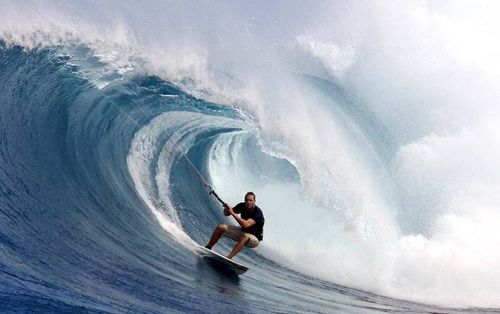
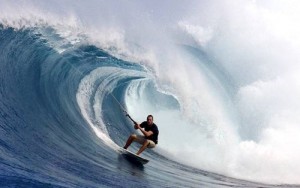
Interested in riding waves here’s 7 quick tips to get you up and surfing quicker and safer:
1. When you get rolled by a wave and you find yourself trapped under it you should let the bar out instead of trying to fly the kite while you are disoriented yourself. This simple action allows you to recover your orientation quicker (ie. work out which way is up!).
2. A common mistake amongst novice kitesurfers is that they try to steer with their boards. Kitesurfing however is largely about the kite. Hence, if you are changing directions then you should do so with the kite leading.
3. Once riding on the wave you should keep the kite as low as possible (to keep you on the wave!).
4. While learning the quick top and bottom turns common on waves beginner wave riders can steer to early too early with the board and so lose a lot of tension in the lines as the wave carries you fast towards your kite. Once you’ve lost tension you are effectively surfing, which can be great if that was what you intended of terrifying if you didn’t and you now have a 20ft monster breathing down your neck. Solve this by entering the turn with your kite first (see 2 above).
5. One of the best ways of mastering and conquering a wave is to pick it out early. Going for a wave once it’s already formed means you arrive to the party too late. Try to pick your waves early.
6. Getting the sense of a wave is important because it allows you to visualize its movements and antics. Spend time on the beach just watching the waves, once you start to understand how the wave is forming and breaking you can work out how to ride it more effectively.
7. When you start dropping into a wave it is wise to lower your center of gravity by bending your knees. A lower center of gravity means greater balance and even better control.
Thanks to the guys over at kiteworld.net for the basis of this post.
If you’ve got any questions relating to any of the techniques mentioned here why not let us know in the comments below.